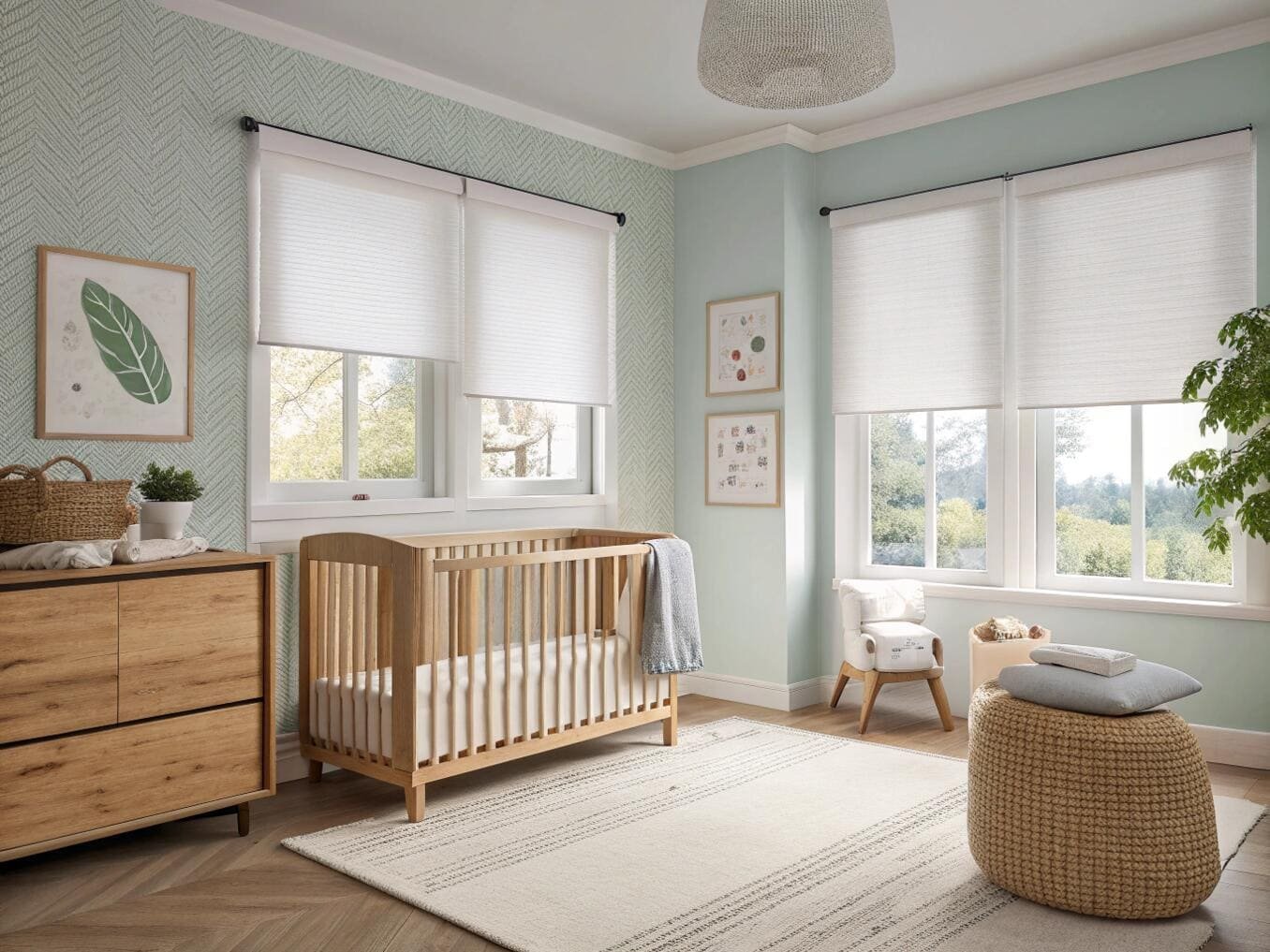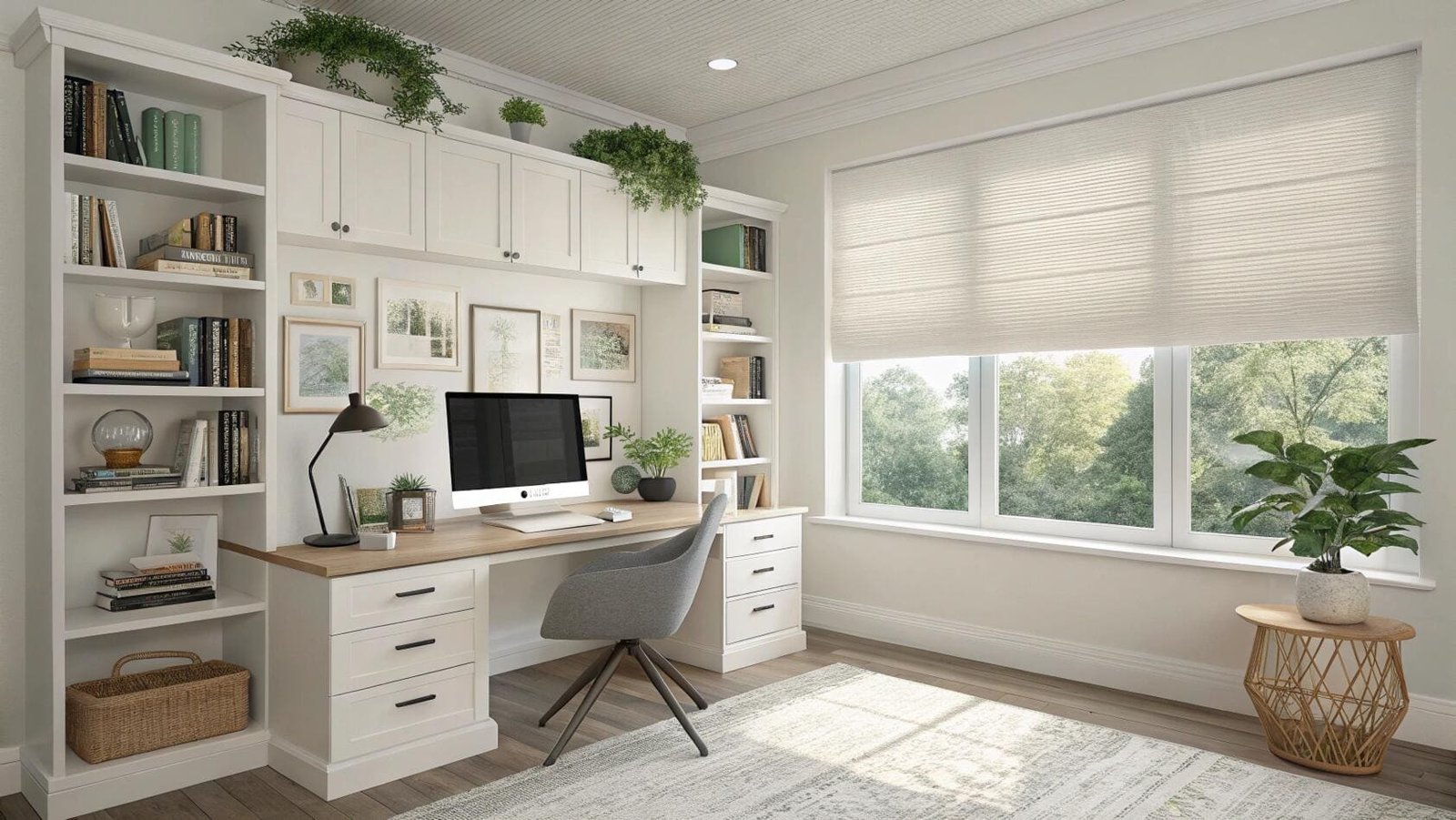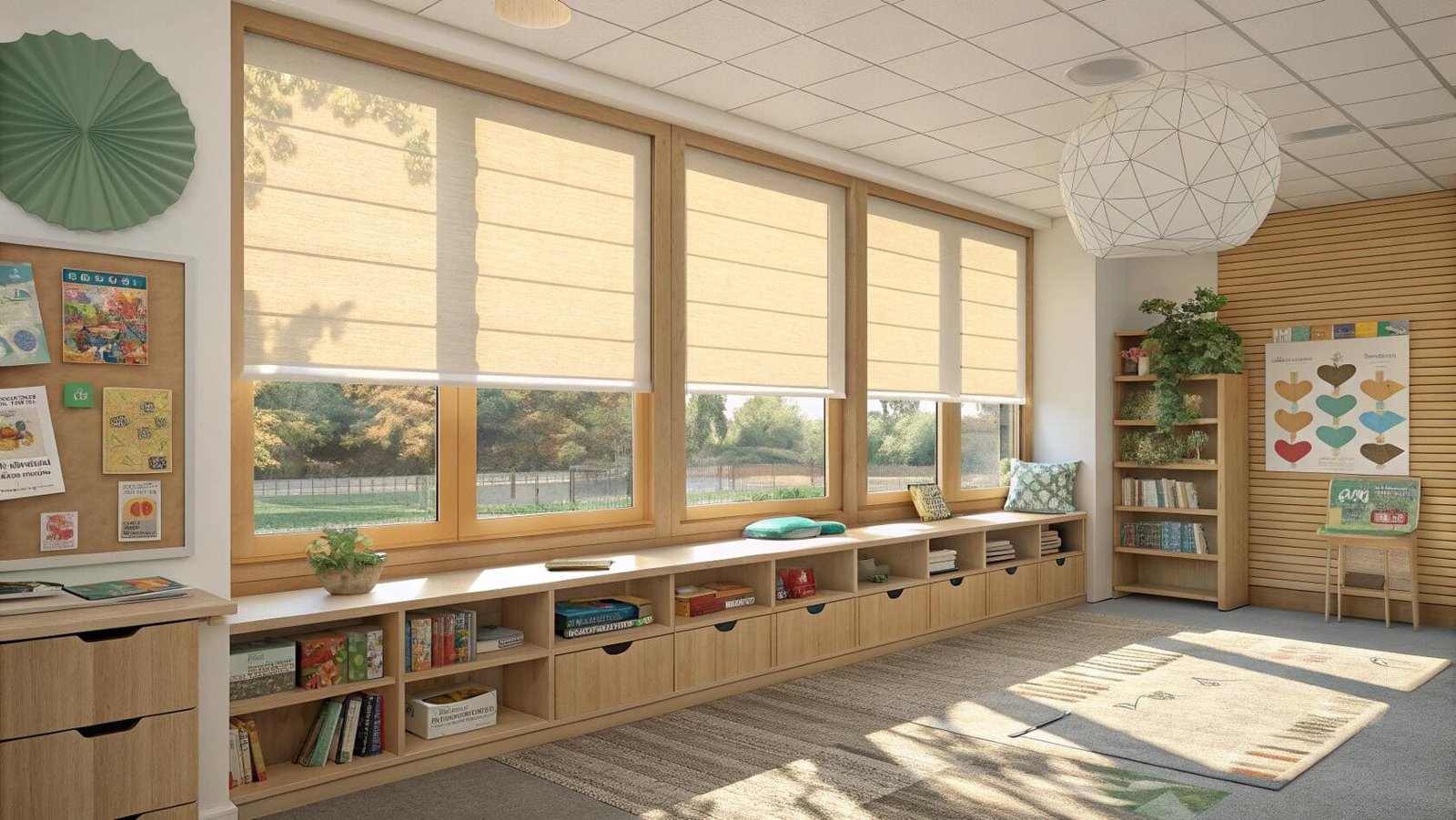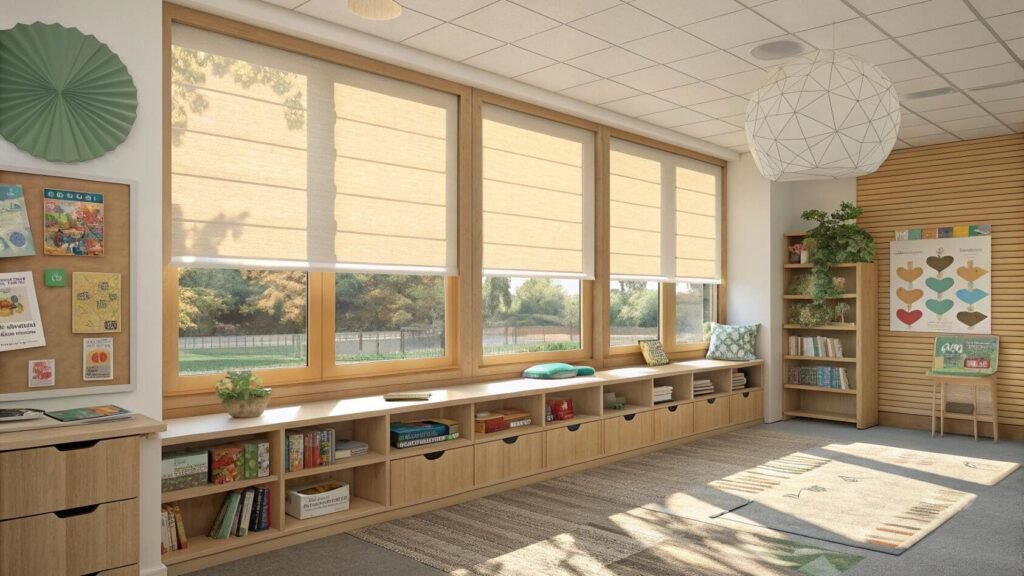Your clients are increasingly asking for sustainable and non-toxic materials. You want to deliver, but navigating the world of green certifications like GREENGUARD and LEED can be a complex and time-consuming challenge.
The healthiest blinds are certified for low VOC emissions[^1], like GREENGUARD or OEKO-TEX®. The most eco-friendly options are cellular shades made from recycled materials[^2] for insulation, and smart motorized shades[^3] that drastically cut energy use.

As a supplier, I'm seeing this shift firsthand. Project managers like Emma are now required to specify products that not only look good but also contribute to a healthy indoor environment and a building's sustainability goals[^4]. It's no longer a niche request; it's becoming the standard for high-quality projects, especially in schools, healthcare facilities, and premium residential homes. Understanding these eco-credentials isn't just about being green—it's about winning projects and delivering real value. Let's break down what truly makes a blind healthy and eco-friendly.
What are the healthiest window treatments?
You're specifying for a school or hospital where indoor air quality[^5] is paramount. You need to be certain that the blinds you choose won't release harmful chemicals into the air over time.
The healthiest window treatments are those with third-party certifications like GREENGUARD[^6] Gold or OEKO-TEX®[^7] Standard 100. These certifications guarantee that the products have extremely low to zero VOC emissions.

Volatile Organic Compounds (VOCs) are chemicals that can be released from manufacturing materials into the air. In a closed room, they can contribute to poor indoor air quality[^5]. That's why for sensitive projects, I always recommend blinds with rigorous certifications.
| Certification | What It Guarantees | Best For |
|---|---|---|
| GREENGUARD Gold | The product meets strict chemical emission limits, making it safe for schools and healthcare facilities. | Commercial and public spaces. |
| OEKO-TEX® Standard 100 | Every component of the product has been tested for harmful substances and is therefore harmless to human health. | Residential projects, especially nurseries. |
Beyond certifications, the material itself matters. Natural options like bamboo are made from a fast-growing, renewable resource that doesn't require pesticides. For synthetic options, I recommend looking for PVC-free polyester[^8] fabrics, which are more stable and have a lower environmental impact.
What are the most energy-efficient window coverings?
Your client wants to reduce their building's energy consumption and lower their heating and cooling bills. You're looking for a window treatment that provides the best possible insulation against heat and cold.
By far, the most energy-efficient window coverings[^9] are cellular shades, also known as honeycomb shades. Their unique honeycomb structure[^10] traps air, creating a powerful insulating barrier at the window.

The genius of cellular shades[^11] is their simple, nature-inspired design. The pockets of trapped air dramatically slow the transfer of heat. In the winter, they keep the warm air in, and in the summer, they keep the hot sun out. A high-quality cellular shade can lower a room's heat loss through the window by 40% or more. The performance is measured by its U-value[^12]; some of our best shades can achieve a U-value as low as 1.5 W/m²·K. Even better, many of our eco-friendly cellular shades[^13] are made from recycled PET yarn. This means every square meter of fabric can give a new life to about 12 used plastic bottles. It’s a solution that saves energy for the client and helps reduce plastic waste.
Are blackout cellular shades toxic?
You want to offer the room-darkening benefits of a blackout shade, but your client is concerned that the materials used in the blackout liner might be harmful or release fumes.
No, modern, high-quality blackout cellular shades are not toxic. Reputable manufacturers use stable, inert materials for their blackout liners and have them certified by standards like OEKO-TEX® and GREENGUARD to ensure they are safe.

This is a valid concern, often rooted in past issues with cheap, low-quality vinyl products. However, the technology has changed completely. Today, the blackout layer is typically a very thin, aluminum-based film or a specially coated polyester that is laminated to the main fabric. These materials are incredibly stable and do not off-gas or release harmful chemicals. When I'm specifying for a bedroom or a nursery, I make sure the product carries an OEKO-TEX® Standard 100 certification. This test checks for a long list of harmful substances, ensuring every part of the blind—from the fabric to the thread to the blackout liner—is completely safe for human health. It provides peace of mind that you're providing a healthy sleeping environment.
Which roller-blind certifications help earn LEED points?
You're working on a major commercial project aiming for LEED[^14] certification. You need to know exactly which features and certifications to look for in roller blinds to help contribute to the building's overall score.
To earn LEED points[^15], specify roller blinds made from PVC-free, 100% recyclable polyester. Also, look for GREENGUARD Gold certification. These features directly contribute to the "Low-Emitting Materials" and "Sourced Raw Materials" credit categories.

For project managers like Emma, this is where product selection becomes strategic. LEED (Leadership in Energy and Environmental Design) is the gold standard for green buildings, and every point counts. Our EcoGreen fabric series is designed specifically for this. Because it's made from 100% recyclable polyester and is completely free of PVC, it helps you meet the criteria for using materials with a high-recycled content and avoiding chemicals of concern. When combined with a GREENGUARD Gold certification, you have a powerful combination that satisfies multiple LEED requirements. Furthermore, specifying motorized shades that integrate with the building automation system can also contribute points under the "Energy and Atmosphere" category by demonstrating significant energy savings.
Are aluminum-coated solar fabrics[^16] recyclable?
You like the performance of solar fabrics with an aluminum backing, as they are fantastic at reflecting heat. But you're worried that this composite material might be destined for a landfill at the end of its life.
Yes, many high-performance aluminum-coated solar fabrics are now designed to be recyclable. The thin aluminum layer can be mechanically separated from the polyester base fabric, allowing both materials to be recycled.

This is a great example of how material science is advancing to support a circular economy. The performance benefit of these fabrics is undeniable. The aluminum backing can reflect over 70% of solar radiation, dramatically reducing the heat that enters a building and lowering the load on the air conditioning system. In the past, the main drawback was the end-of-life problem. But our latest generation of eco-friendly fabrics has solved this. The bond between the aluminum and the polyester is designed to be broken at a specialized recycling facility. This means a high-performance product doesn't have to come with an environmental trade-off. It’s a key selling point for any corporate client with strong sustainability mandates.
How much HVAC energy can motorized eco-rollers save annually?
The upfront cost of motorization is higher, and you need to build a strong business case for your client. You need hard numbers on the return on investment through energy savings.
Smart motorized eco-rollers, when paired with light and temperature sensors, can reduce a building's annual HVAC energy consumption by 15-25%. This creates significant operational savings over the product's lifespan.

This is where smart shading proves its value. Instead of reacting to a room getting hot, an automated system acts proactively. Sensors detect when the sun's intensity on a window reaches a certain threshold and automatically lower the blinds before the space heats up. In the winter, the system does the opposite, retracting the blinds to take advantage of free solar heat. This proactive management significantly reduces the peaks and valleys for the HVAC system. Over the 15- to 20-year lifespan of a quality motorized system, the 15-25% annual energy savings can more than pay for the initial investment. In fact, the energy saved is often enough to completely offset the carbon footprint of manufacturing the blinds in the first place, making it a truly sustainable choice.
Conclusion
For healthy, eco-friendly blinds, prioritize GREENGUARD-certified materials to ensure low VOCs and choose cellular shades or smart motorized rollers to maximize energy efficiency, reduce costs, and support sustainability goals.
---
[^1]: Learn about low VOC emissions and their impact on indoor air quality and health.
[^2]: Learn how using recycled materials can enhance your project's sustainability profile.
[^3]: Find out how smart motorized shades can optimize energy use and reduce costs.
[^4]: Explore strategies to meet sustainability goals and enhance project value.
[^5]: Understanding indoor air quality can help you create healthier living and working environments.
[^6]: Understanding GREENGUARD certification can help you choose safer, healthier materials for your projects.
[^7]: Explore OEKO-TEX® certification to ensure the safety of textiles in your projects.
[^8]: Discover the benefits of choosing PVC-free polyester for healthier indoor environments.
[^9]: Find out which window coverings offer the best energy efficiency for your needs.
[^10]: Learn about the unique design of honeycomb shades and their insulation benefits.
[^11]: Discover how cellular shades can significantly improve energy efficiency in your home or office.
[^12]: Understanding U-value can help you select the most energy-efficient window treatments.
[^13]: Learn about the eco-friendly features of cellular shades and their benefits.
[^14]: Explore how LEED certification can enhance building sustainability and attract eco-conscious clients.
[^15]: Learn how specific window treatments can contribute to earning LEED points for your projects.
[^16]: Discover the recyclability of aluminum-coated solar fabrics and their environmental impact.
Partner with VelaBlinds for Your Next Project
Smart window treatments shouldn't be complicated. After working with 500+ distributors and contractors worldwide, I've streamlined the process to get you quality products, competitive pricing, and reliable support - every time.
Why project professionals choose VelaBlinds:
- ✅ Fast, Accurate Quotes - Detailed specs and pricing within 24 hours
- ✅ Transparent Pricing - No hidden fees, volume discounts clearly outlined
- ✅ Quality Assurance - Direct partnerships with certified OEM manufacturers
- ✅ Project Support - Dedicated account manager from quote to delivery
Start your next project:
📧 Quick Quote: Send your requirements to info@velablinds.com
📱 Direct Contact: WhatsApp +86 137 2012 8317
🌐 Browse Solutions: https://velablinds.com/
📁 Product Resources: Access spec sheets, catalogs & project files
Paul Chen, Founder
"I built VelaBlinds to solve the real challenges I faced as a project buyer - long lead times, unclear specs, and unreliable suppliers. Let's discuss how we can power your projects with smarter blinds."
Serving distributors and contractors across North America, Europe, and Australia since 2018.




